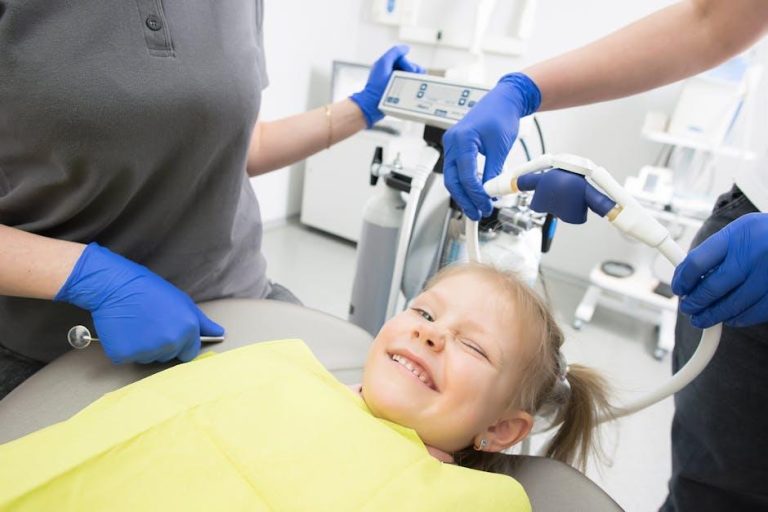1 in 3 Kids Has Dental Problems, Poll Finds – U.S. News & World Report
Dental health is a vital part of overall well-being, especially for children whose bodies and habits are still developing. Recently, a poll published by U.S. News & World Report revealed a concerning statistic: 1 in 3 kids in the United States currently suffers from some form of dental problem. This eye-opening figure highlights how widespread oral health issues are among children and underscores the urgent need for better awareness, prevention, and care.
Why Are Dental Problems So Common in Children?
Understanding why so many children face dental difficulties involves considering several factors:
- Diet and Sugar Consumption: Frequent intake of sugary foods and drinks promotes tooth decay.
- Inadequate Oral Hygiene: A lack of regular brushing and flossing can lead to plaque buildup and cavities.
- Limited Access to Dental Care: Many families face obstacles such as cost or location, preventing routine dental check-ups.
- Lack of Education: Children and parents may not fully understand the importance of dental hygiene.
- Genetic Predispositions: Some kids are naturally more prone to dental problems.
Types of Dental Problems Commonly Found in Kids
The poll’s findings encompass a range of oral health issues. Here’s a breakdown of the most common problems affecting children:
| Dental Problem | Description | Symptoms |
|---|---|---|
| Tooth Decay (Cavities) | Damage to the tooth enamel caused by acid-producing bacteria. | Toothache, visible holes, discoloration |
| Gum Disease | Inflammation or infection of gums, often starting as gingivitis. | Red/swollen gums, bleeding while brushing, bad breath |
| Tooth Sensitivity | Pain or discomfort in teeth in response to temperature or sweets. | Sharp pain, discomfort during eating/drinking |
| Malocclusion (Misaligned Teeth) | Irregular alignment of teeth affecting bite and smile aesthetics. | Difficulty chewing, speech trouble, visible crooked teeth |
| Enamel Hypoplasia | Thin or missing enamel which can lead to vulnerability in teeth. | White spots, rough texture, higher cavity risk |
Consequences of Untreated Dental Issues in Children
When dental problems in kids go untreated, they can cause multiple complications:
- Pain and Discomfort: Chronic dental pain affects concentration and sleep.
- Speech and Chewing Difficulties: Oral health problems can interfere with essential daily functions.
- Self-Esteem Issues: Poor dental appearance may affect social interactions and confidence.
- Infections: Untreated cavities and gum diseases can progress to serious infections.
- Academic Performance: Pain and dental-related absences impact learning.
Practical Tips for Preventing Dental Problems in Kids
Parents and caregivers play a crucial role in fostering healthy dental habits early on. Here are some practical steps to reduce the risk of dental issues:
- Establish a Dental Routine: Encourage brushing twice daily with fluoride toothpaste and flossing once daily.
- Limit Sugary Foods and Drinks: Replace soda and candies with water, fresh fruits, and healthy snacks.
- Schedule Regular Dental Visits: Early and routine check-ups help catch problems before they worsen.
- Provide Dental Education: Teach kids why oral hygiene matters and make the experience fun.
- Use Protective Gear: Use mouthguards during sports to prevent injury.
Sample Daily Dental Care Schedule for Children
| Time of Day | Recommended Activity |
|---|---|
| Morning | Brush teeth after breakfast (2 minutes minimum) |
| Afternoon | Rinse mouth or drink water after lunch |
| Evening | Brush teeth before bedtime and floss |
Case Study: Turning Around Dental Health in a Local Community
In a recent community initiative in California, pediatric dentists partnered with schools to provide free dental screenings, educational workshops, and treatment referrals for underserved children. After a year:
- Dental problems among participating kids dropped by over 20%
- Parents reported improved dental hygiene habits in their children
- The program raised awareness about the importance of oral health and its link to overall wellness
This case highlights how collaborative efforts between healthcare providers, educators, and families can dramatically improve children’s dental outcomes.
Conclusion: Prioritizing Our Children’s Oral Health
The poll confirming that 1 in 3 kids has dental problems is a wake-up call that children’s oral health needs more attention from parents, schools, and healthcare professionals. Establishing strong dental care routines, improving access to affordable dental services, and educating families about oral hygiene can reduce this disturbing statistic significantly.
Remember, healthy teeth and gums are fundamental not only to a child’s smile but also to their confidence, academic success, and overall well-being. Start today by emphasizing dental care in your child’s life—because every kid deserves to smile brightly and live comfortably.


